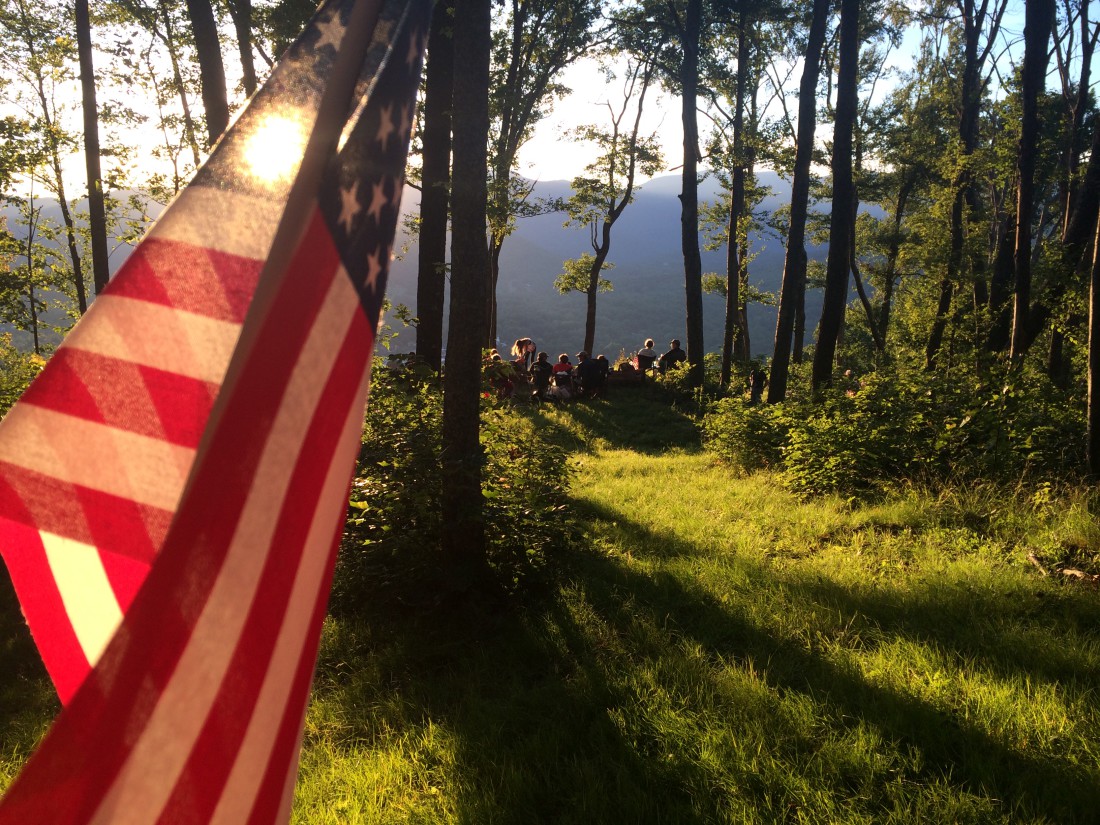From the Swannanoa Valley Museum:
Celebrate the 4th of July with a moderate, 1.5-mile evening hike to the peak of Sunset Mountain overlooking the town of Black Mountain. Here, relax with a picnic dinner, a cold drink and an old-fashioned watermelon cutting while historians from the Swannanoa Valley Museum & History Center share many tales of this most historic place. Guests will then watch the sun set and the fireworks explode over the town.
Towering over 700 feet above downtown Black Mountain, Sunset Mountain (known in the 1920s as Miami Mountain) is the town’s nearest, highest, and least-developed mountain. Even as Black Mountain expanded over the last half century, except for CP&L transmission lines crisscrossing the face of the mountain, the more than 100 privately-owned acres have remained dormant.
During the first quarter of the 20th century, however, Sunset Mountain was a busy tourist attraction. It was not until a devastating 1920s fire destroyed the mountaintop hotel, commonly referred to as the Peabody Hotel, that the town’s most scenic tourist destination slipped back into time. The ruins of the hotel still sit undisturbed at the peak of the mountain.
A large wooden lookout tower perched along the ridgeline behind the peak was called the Mt. Mitchell Observation Tower. During the 1920s, hundreds of tourists traveled the narrow, switch-back road that the Museum will hike on July 4th to get a glimpse of the spectacular mountain scenery that compliments Black Mountain. From the peak on a clear night, visitors are still able to view the skyline of Asheville, the Newfound Mountains, and the Great Smoky Mountains.
Many of Black Mountain’s long-time residents still remember the large white-washed rocks spelling out the word “Miami” that identified the panoramic mountaintop. Those rocks not only branded the summit, but drew special attention to the famous hotel situated nearby. From the late 1910s to the outbreak of World War II, “Miami” was Black Mountain’s most well-known sight.
The rocks themselves are still embedded in the mountain, but now are buried under almost 60 years of decaying leaves. The famous white rocks created quite a stir in Black Mountain shortly after World War II broke out. Town folk believed that in the event of an air attack, the highly visible marker would serve as a strategic landmark from the sky and draw attention to the valley. As a result, Mr. W.D. Hyatt, the caretaker of the mountain, painted the rocks black and discontinued his annual maintenance trips to Black Mountain’s most memorable landmark.
To visit Miami Mountain, the Museum’s Fourth of July hikers will meet at the Black Mountain Savings Bank, 200 E. State Street in Black Mountain at 6:00 p.m. Please bring dinner, water, a folding chair, a flash light, poncho (just in case), camera, and warm clothes (it can get chilly after dark even in July). The Museum’s team will transport chairs up the mountain and will provide watermelon. Cost is $35 for members, $50 for nonmembers, and $25 for children (under 18). All proceeds benefit the non-profit Museum. Advance registration is required. To register please call 669-9566, email info@swannanoavalleymuseum.org, or visit www.swannnaoavalleymuseum.org/calendar.




Before you comment
The comments section is here to provide a platform for civil dialogue on the issues we face together as a local community. Xpress is committed to offering this platform for all voices, but when the tone of the discussion gets nasty or strays off topic, we believe many people choose not to participate. Xpress editors are determined to moderate comments to ensure a constructive interchange is maintained. All comments judged not to be in keeping with the spirit of civil discourse will be removed and repeat violators will be banned. See here for our terms of service. Thank you for being part of this effort to promote respectful discussion.